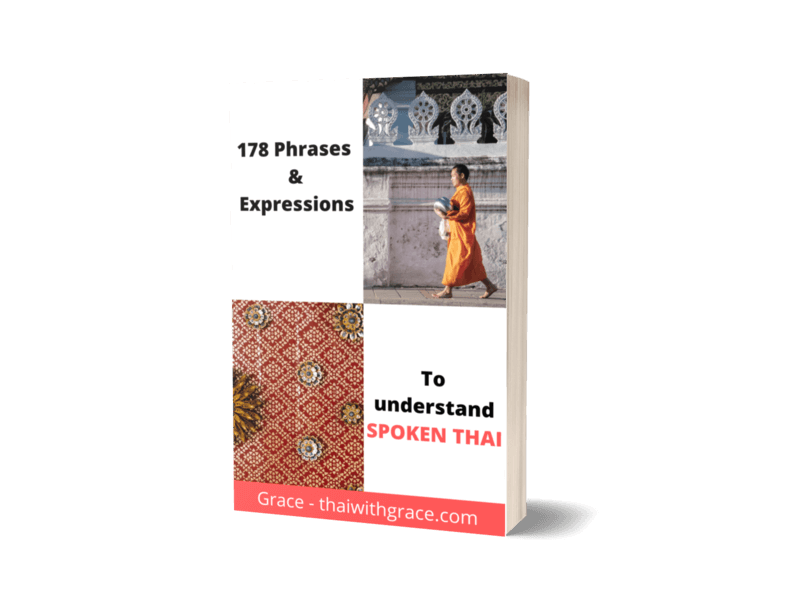Let’s learn when to use ซึ่ง (sêung) vs when to use ที่ (têe).
ซึ่ง (sêung) is the same as “which” or “who” in English and ที่ (têe) is used to say “that” (in a specific sense) as I will explain.
ซึ่ง sêung
The term ซึ่ง sêung is used to explain and give more details. It is the direct translation of which or who.
Examples
- I sit and look at a guy who is sitting on the chair. (Giving more information about the guy)
ฉันนั่งมองผู้ชายซึ่งนั่งอยู่ที่เก้าอี้
chăn nâng mong pôo chaai sêung nâng yòo têe gâo-êe - My home, which I built on my own, is a home that is beautiful. (Giving more information about the house)
บ้านฉัน ซึ่งฉันเป็นคนสร้างเอง เป็นบ้านที่สวยมาก
bâan chăn · sêung chăn bpen kon sâang ayng · bpen bâa น têe sŭay mâak - Thailand, which is a country with 70 million inhabitants, is a center of transportation in Asia.
ประเทศไทย ซึ่งเป็นประเทศที่มีประชากร 70 ล้านคน เป็นศูนย์กลางของการคมนาคมของเอเชีย
ที่ têe
The term ที่ têe is used in a clause which tells a specific fact about the noun. Let’s take a look at some examples.
Examples
- I am sitting and looking at the guy that is sitting on the chair. (He is NOT STANDING he is sitting)
ฉันนั่งมองผู้ชายที่นั่งอยู่ที่เก้าอี้
chăn nâng mong pôo chaai têe nâng yòo têe gâo-êe - The home that I built is a beautiful home. (It’s the home that ‘I’ built and NOT someone else)
บ้านฉันที่ฉันเป็นคนสร้างเอง เป็นบ้านที่สวยมาก
bâan chăn · têe chăn bpen kon sâang ayng · bpen bâan têe sŭay mâak - A good person is a person that doesn’t take advantage of other people.
คนที่ดีคือคนที่ไม่เอาเปรียบผู้อื่น
kon-têe-dee keu kon têe mâi ao bprìap pôo èun
Please note: A common mistake is that students think ที่ (têe) is “that” in the meaning of “that cat” or “that thing over there” or “that’s my bed”. These are different. For this meaning of “that”, you would use นั่น or นั้น (nán or nân).
I hope you now understand the difference between ซึ่ง vs ที่ (têe vs sêung) as this is a common point of confusion for my students. Many times it can be interchangeable but it is the same as in English saying “who” or “which” (ซึ่ง) versus saying “that” (ที่).

